Consumers are bombarded with ads. Constantly.
This has led to two worrisome problems for advertisers:
- Adblocking has been increasing for years as more and more people actively avoid ads.
- People’s habits are changing as they automatically ignore ads – a phenomenon called “banner blindness.”
“Tuning out the noise has become instinctual,” writes marketer Nishat Mehta on Forbes. “Even my two-year-old son has learned to ‘Skip Ad’ on YouTube to get to his Daniel Tiger video faster.”
So we find ourselves in the vicious cycle of online advertising:
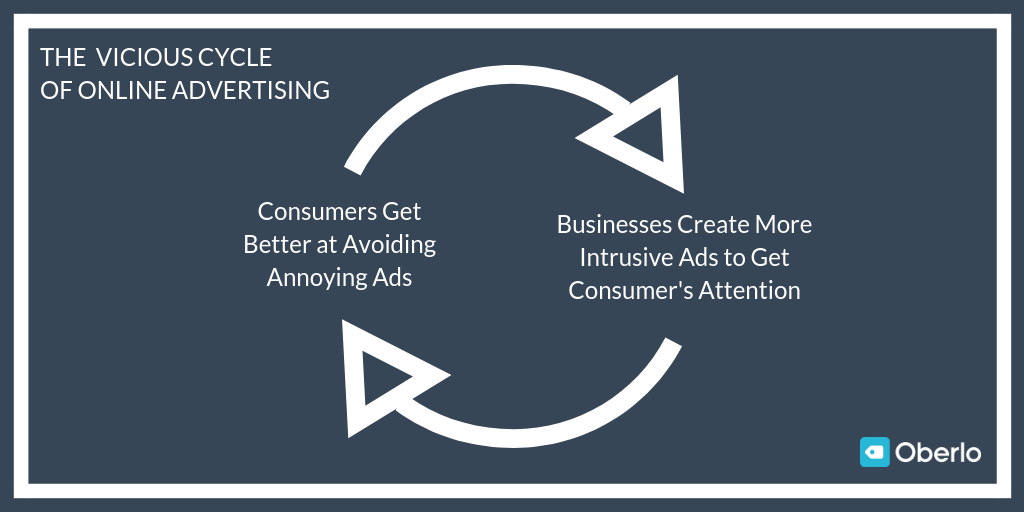
And now the Internet Gods have decreed that “no more shalt thou bombard thy consumer” – with Google Chrome and Safari now actively blocking particularly annoying types of ads.
But in reality, this is actually all good news.
It means the way to win with online advertising is to create ads that people actually want to see.
How? With native advertising.
So what exactly is native advertising and how does it work?



What is Native Advertising?
Native advertising is the use of paid ads that match the appearance, form, and function of the user experience in which they are placed.
Unlike banner ads, display ads, or pre-roll video ads, native ads don’t really look like ads at first glance.
→ Click Here to Launch Your Online Business with Shopify
They’re incognito. Like this:
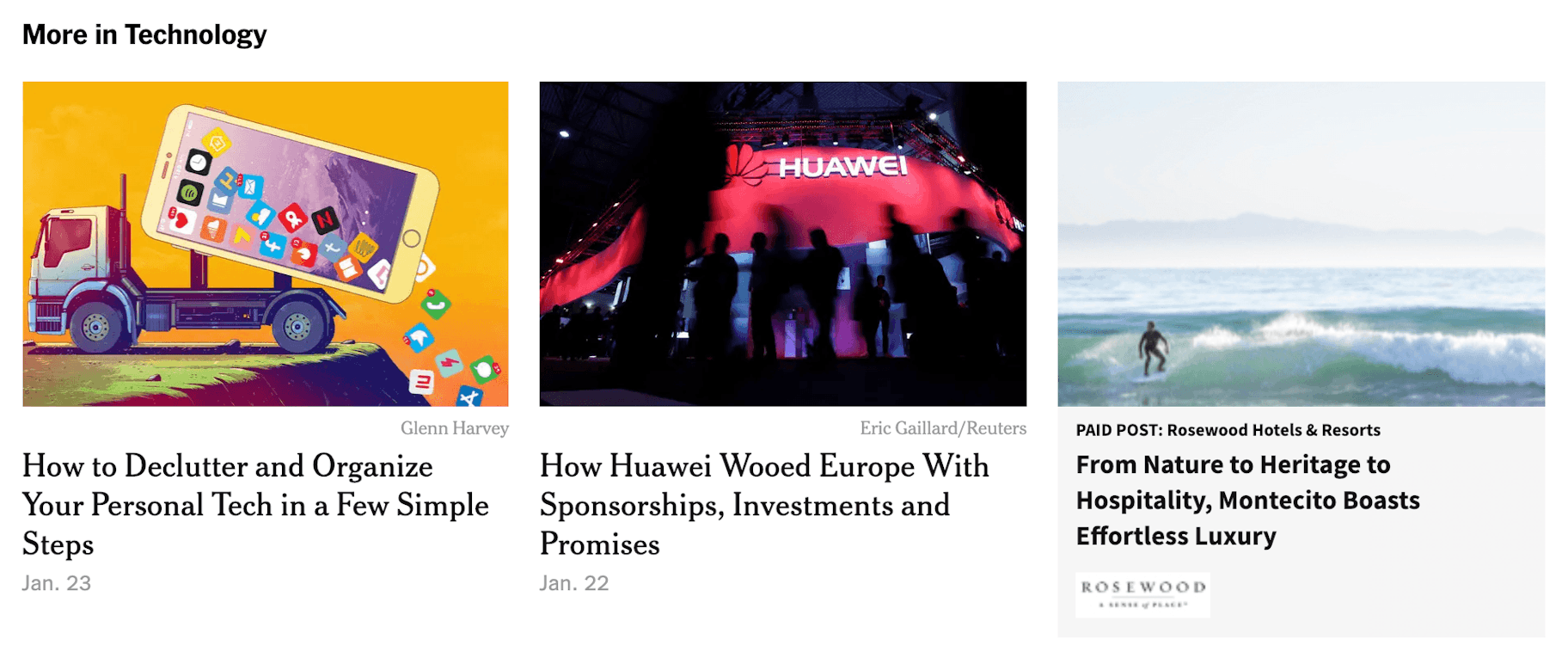
For this reason, native ads are often displayed in well timed social media feeds or as recommended content on the web pages of online publications.
These ads are subtle, helpful, and non-intrusive.
The aim is to deliver advertisements that match their environment and the expected user experience so well that the viewer barely notices that they’re paid ads – and if they do, they don’t mind seeing them.
The idea of “native ads” began to take root in 2012 as the need for a less disruptive form of advertising evolved.
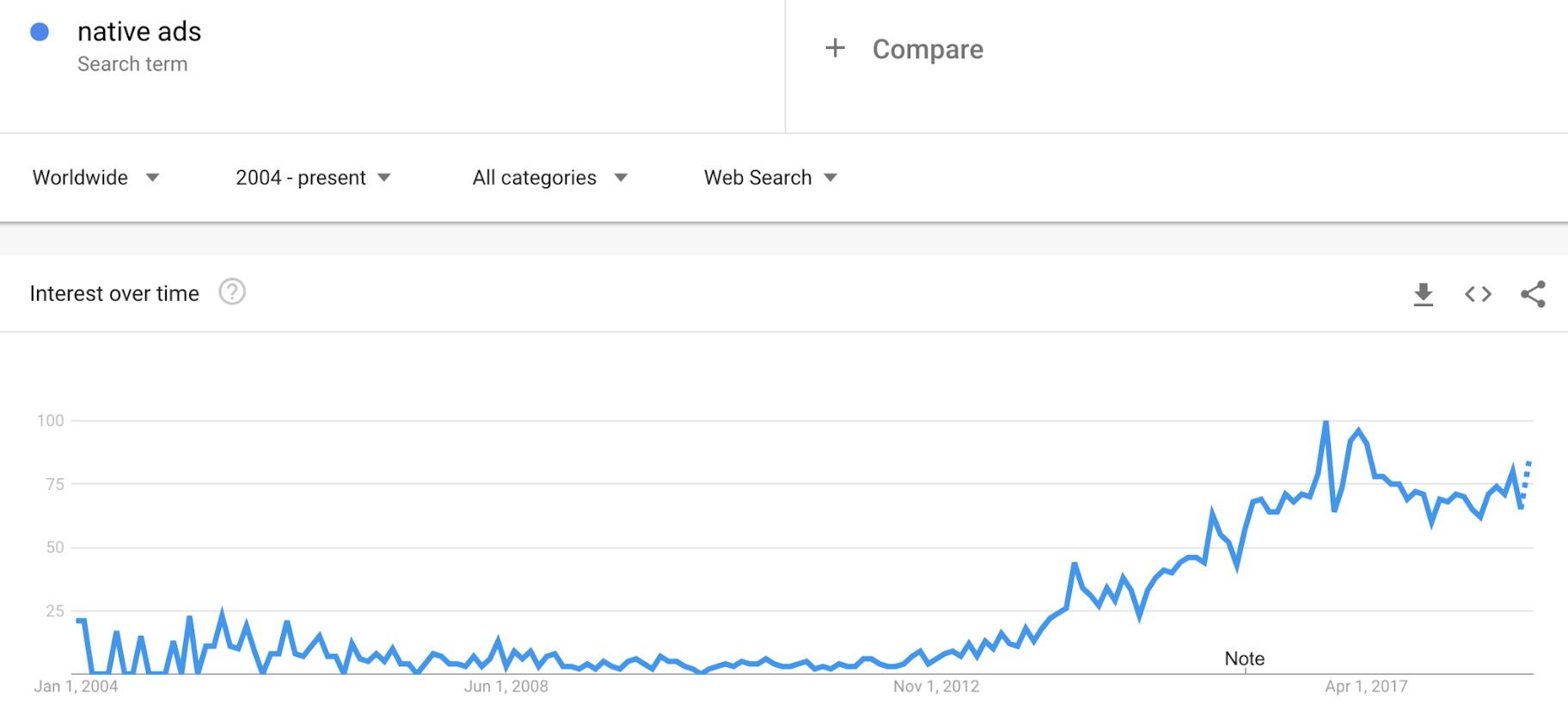
And it’s clear that native ads are the future of online advertising.
According to Business Insider, native advertising will drive 74 percent of all ad revenue this year.
6 Great Native Advertising Examples
Let’s take a look at six native advertising examples that are commonly used by businesses.
1. Sponsored Social Media Posts
Promoted social media posts are one of the most common types of native advertising used online.
Instagram is particularly well-known for being the focus of sponsored native advertising campaigns.
Here’s an example from National Geographic:

This native ad is paid for by Incredible India – an international tourist campaign managed by the Government of India to promote tourism.
Incredible India is using the ad to promote brand awareness and their hashtag, using the call-to-action, “Plan your adventure of a lifetime now in #UntamedIndia.”

The post features a stunning photograph and a caption presenting the story behind the image – this matches National Geographic’s usual Instagram posts perfectly. For this reason, National Geographic’s followers aren’t likely to mind that the post is actually a native advertisement.
2. Sponsored Influencer Content
Brands also often pay influencers to create original content to promote their products.
Here’s an example from GoPro who partnered with influencer VidProMom to create an “unboxing” video in which Meredith Marsh reviews their new camera.
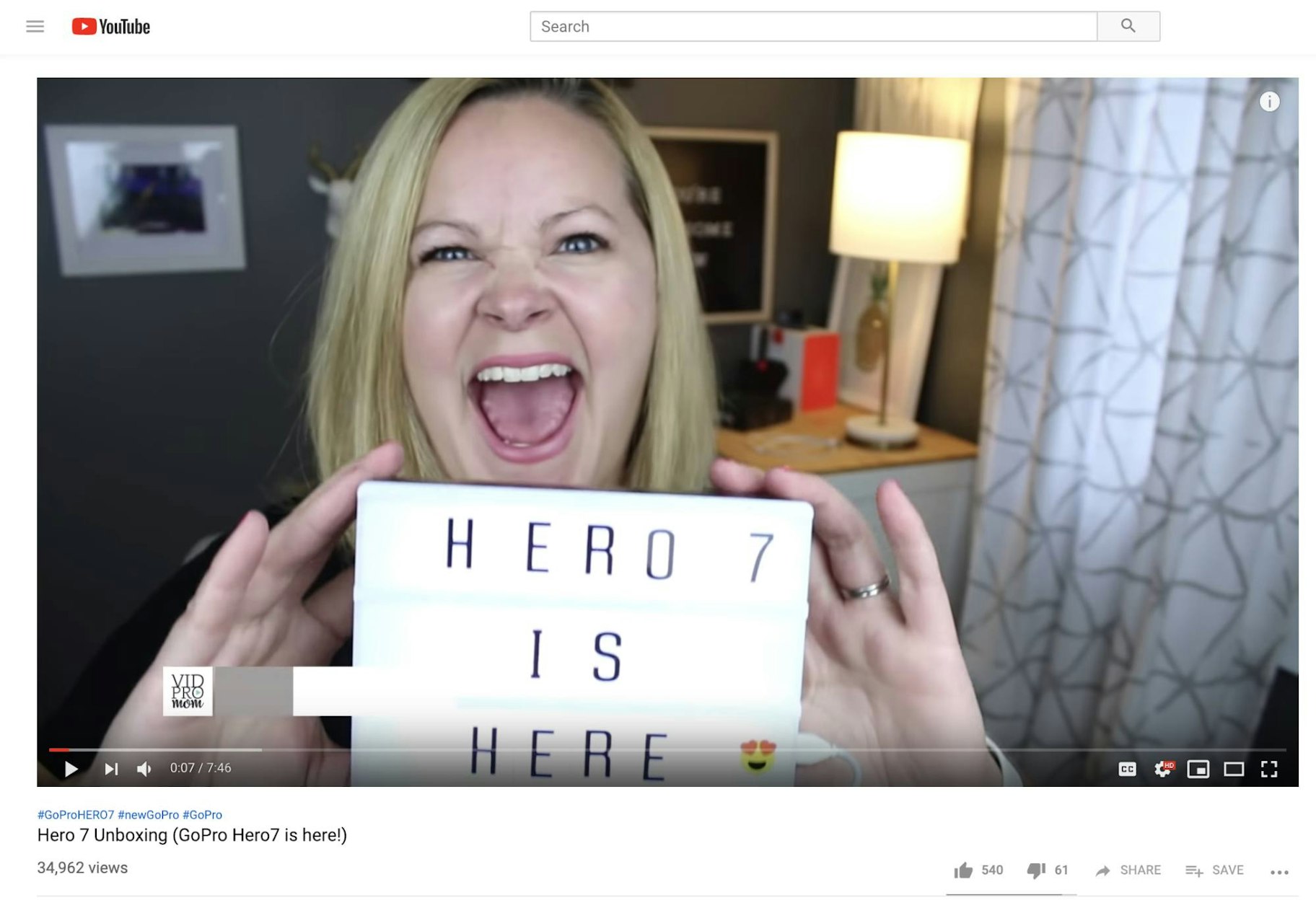
The video fits in perfectly with Marsh’s usual video editing tutorials and camera reviews, and she includes links to buy the camera in the description below the video.
3. Paid Search and Promoted Listings
Another common form of native advertising is paid search, which relates closely to promoted listings.
Below is an example from Google Shopping:
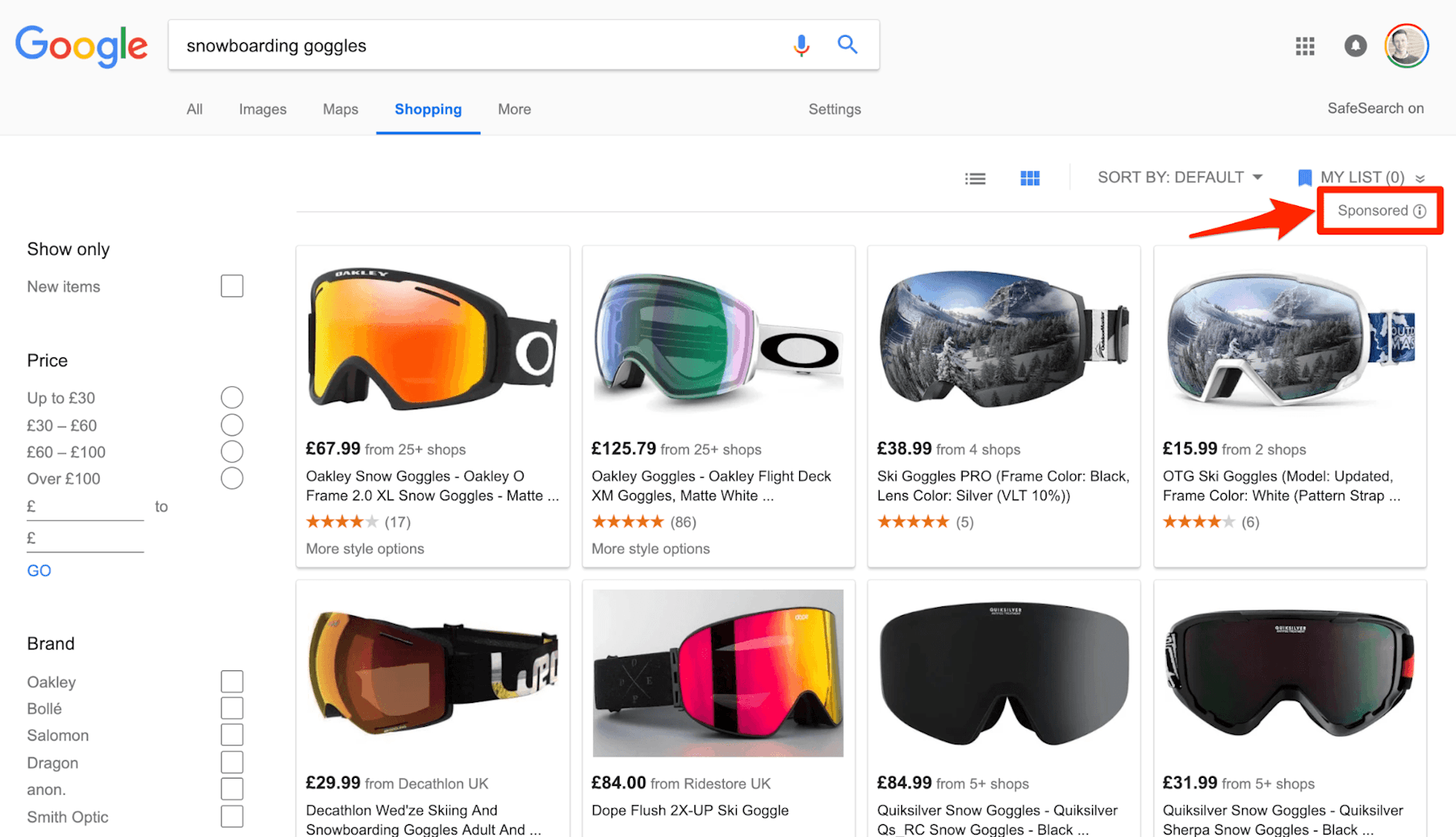
When searching for snowboarding goggles, Google returns relevant listings, some of which have been paid for by advertisers.
These are native advertisements because the listings are presented in the same way as the organic listings. In other words, the user experience is the same – the only difference is the small “Sponsored” label at the top-right of the page.
4. Sponsored Widgets on Online Publications
Sponsored content widgets run rampant on most online publications.
Here’s how The New York Times does it:
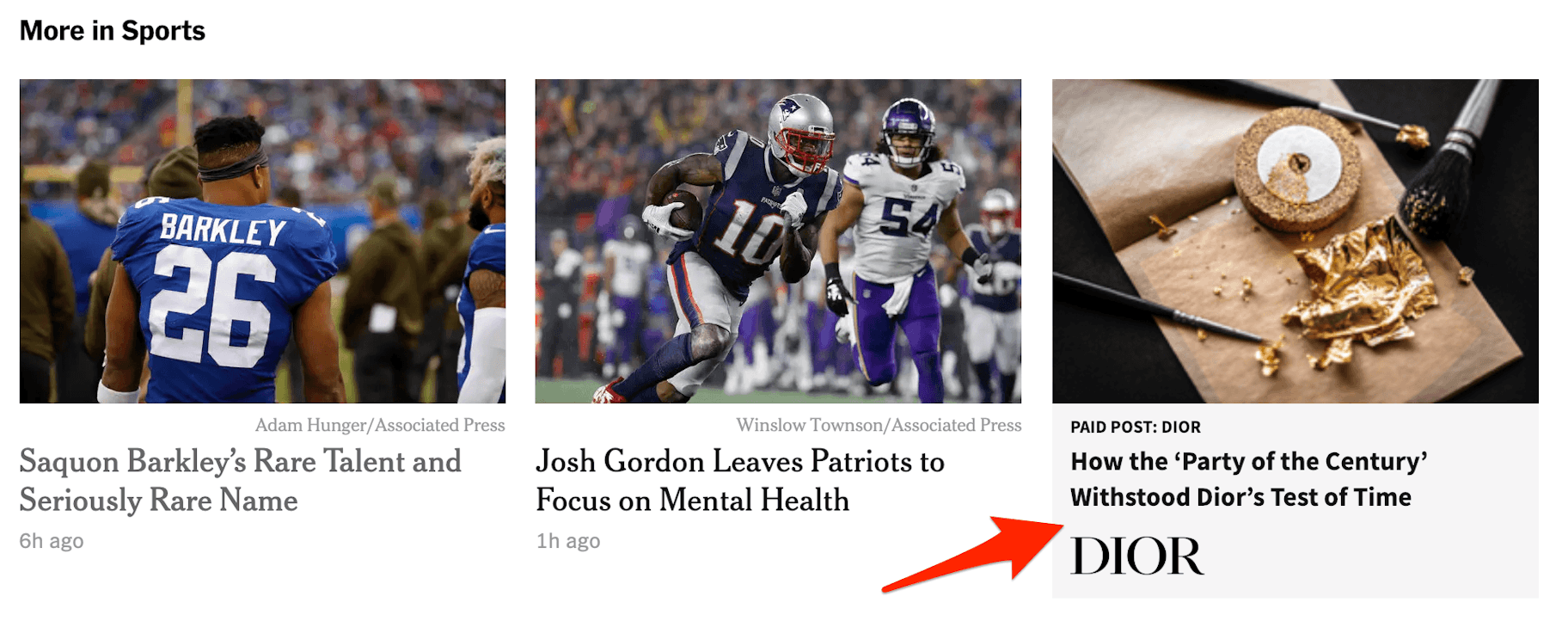
It’s in keeping with the overall design, but they include the disclosure “Paid Post: Dior” alongside the logo of the brand, and highlight the listing in grey to differentiate it from regular New York Times content.
The ad links to a dedicated page on the website featuring an advertorial created by Dior.
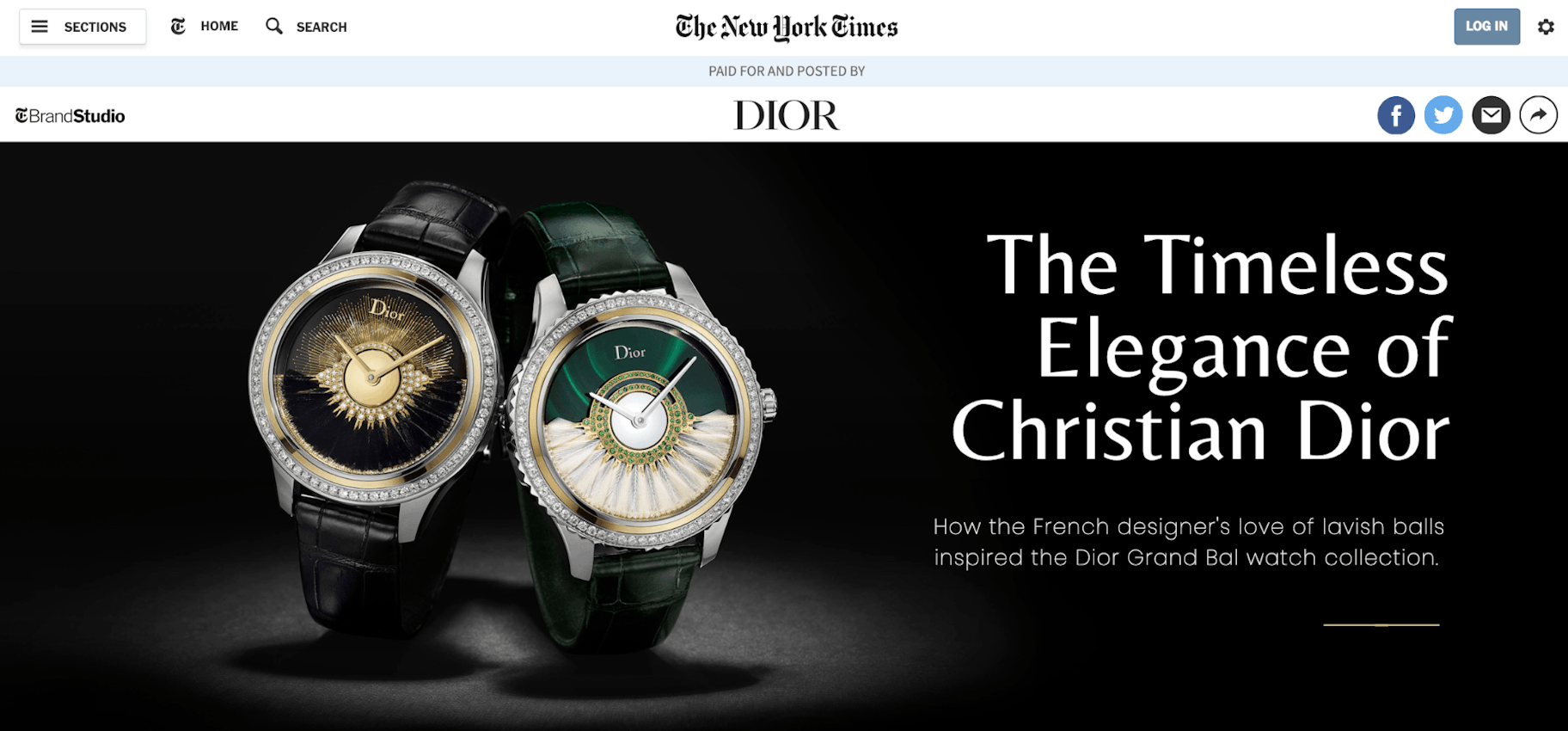
And at the bottom of the content, there’s the clear call-to-action, “Learn More.”
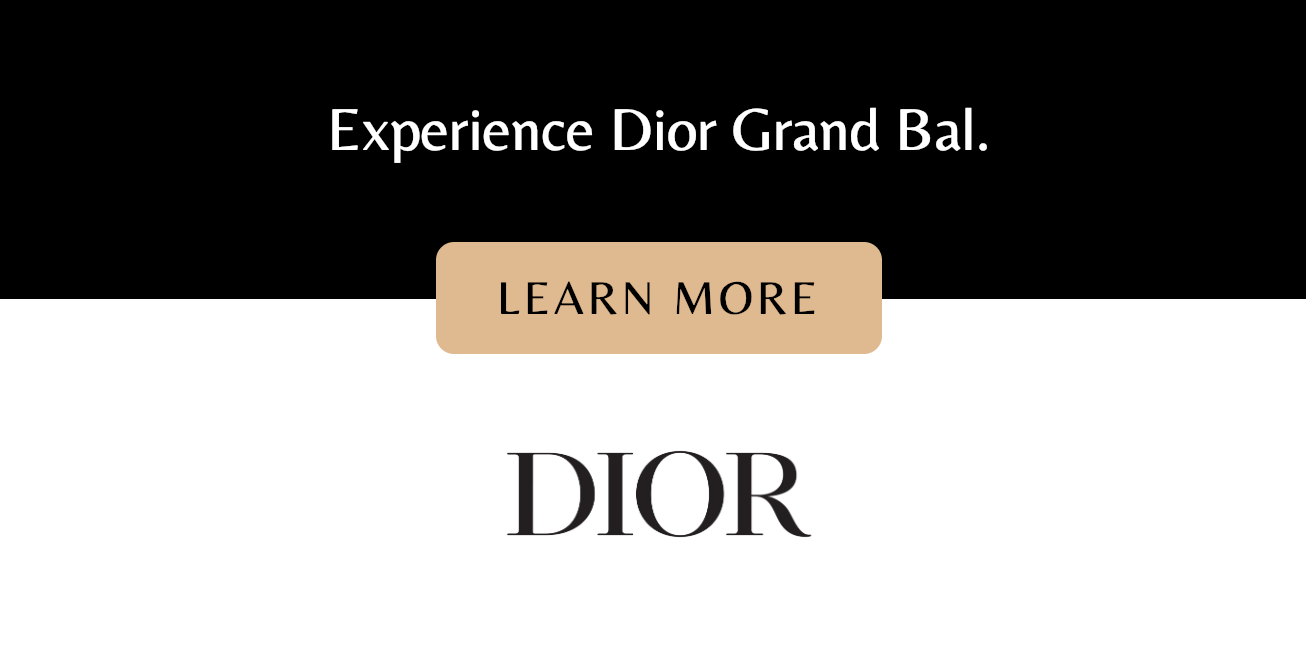
5. Sponsored Editorial Content on Online Publications
Many publications let brands sponsor their original content. Let’s look at an example from the satirical comedy website The Onion sponsored by Clorox Splash.
This native ad is disclosed as “Branded Content,” and a “Sponsored Post.”

The product being promoted is highly relevant to the article’s topic but doesn’t devalue or detract from the content.
It ends with a product description that matches the tone of the article:
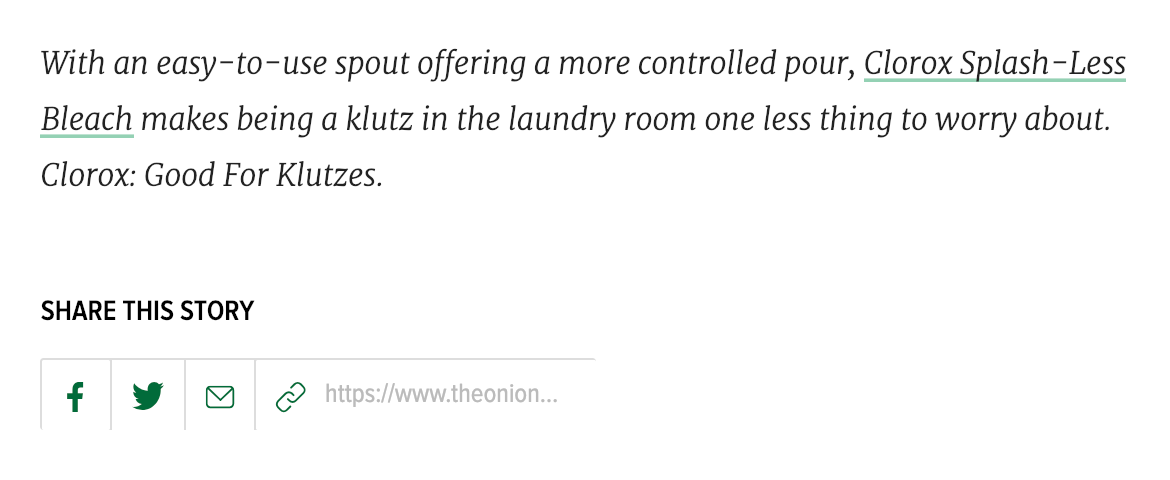
And the link leads straight to the product page.
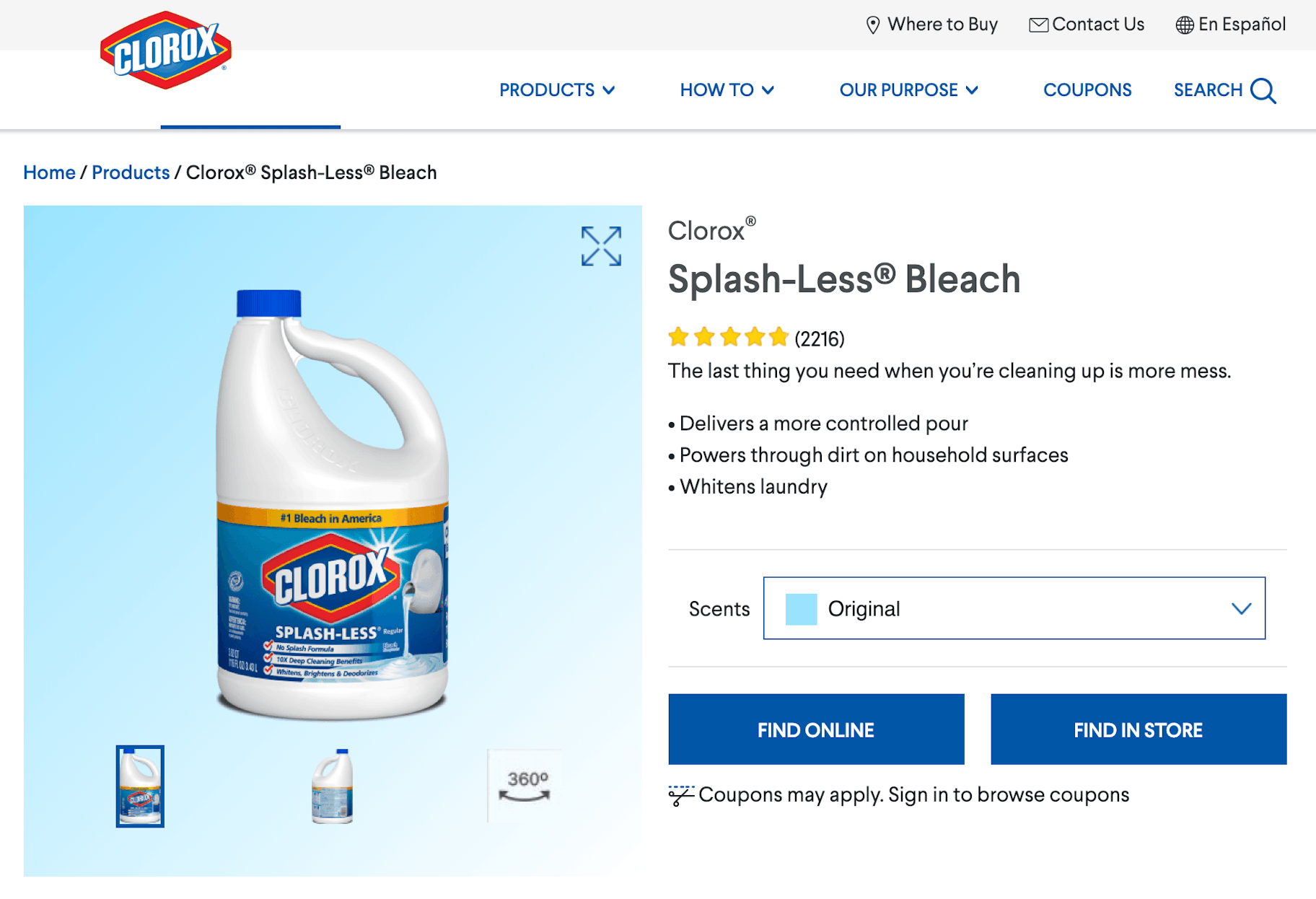
6. Dedicated Brand Accounts on Online Publications
This next type of native advertising is a newer form which has developed on some larger online publications.
Take Forbes’ BrandVoice.
This enables brands to publish their own content on the site alongside Forbes’ usual editorial content. Currently, organizations such as Mitsubishi, SAP, Deloitte, and even the government of Japan utilize the service.
In the example below, you can see a native ad from Deloitte presented as editorial content. Deloitte has also taken the opportunity to display two banner ads alongside the native article.

4 Ways to Identify Native Advertising
Now let’s dig a little deeper into four of the main characteristics that define a native ad:
1. Native Advertisements Are Paid Promotions
It may sound obvious, but native ads are media that a brand or individual has paid to promote.
As a result, content marketing is not native advertising.
It’s true that content marketing and native advertising have a lot in common, but as Joe Pulizzi, founder of the Content Marketing Institute notes:
“I hate to bring out the obvious, but native advertising is ‘pay to play.’ If a brand or individual did not pay for the spot, it’s not native advertising. Although brands may choose to promote their content by paying for visibility, content marketing is not advertising. You do not pay to create or curate content to your own platform. If you are, you should stop that right now.”
However:
2. Native Ads Are Usually Content-Based
Remember, the goal of native advertising is to contribute in a way that doesn’t disrupt the user experience.
This means that the ads should be helpful, interesting, and highly relevant to viewers.
When users are served ads that genuinely benefit them in some way, they’re more likely to engage with them.
What’s good for consumers is good for business.
For this reason, most native advertisements are content-based. They work to provide value instead of going straight for the hard sell.
In short: Native ads tend to give before they get.
Which is why 70 percent of individuals prefer to learn about products through content rather than through traditional interruption-based advertising.
So the key to native advertising is relevance.
The content must be highly targeted to viewer’s interests and needs if it’s to catch their attention and elicit engagement.
For example, this Business Insider article and native ad present helpful advice for business travelers – it’s relevant and useful:

The article focuses on being genuinely helpful and interesting to its target audience first. Only then does it finish with a soft call-to-action promoting Marriotts Element hotels:
3. Native Ads Are Delivered In-Stream
Native ads blend in.
They exist wherever the user spends time engaging with media – as opposed to hovering around the edges hoping to capture scraps of attention.
This is the key difference between native ads and display ads. Here’s a clear comparison of the two on Facebook:
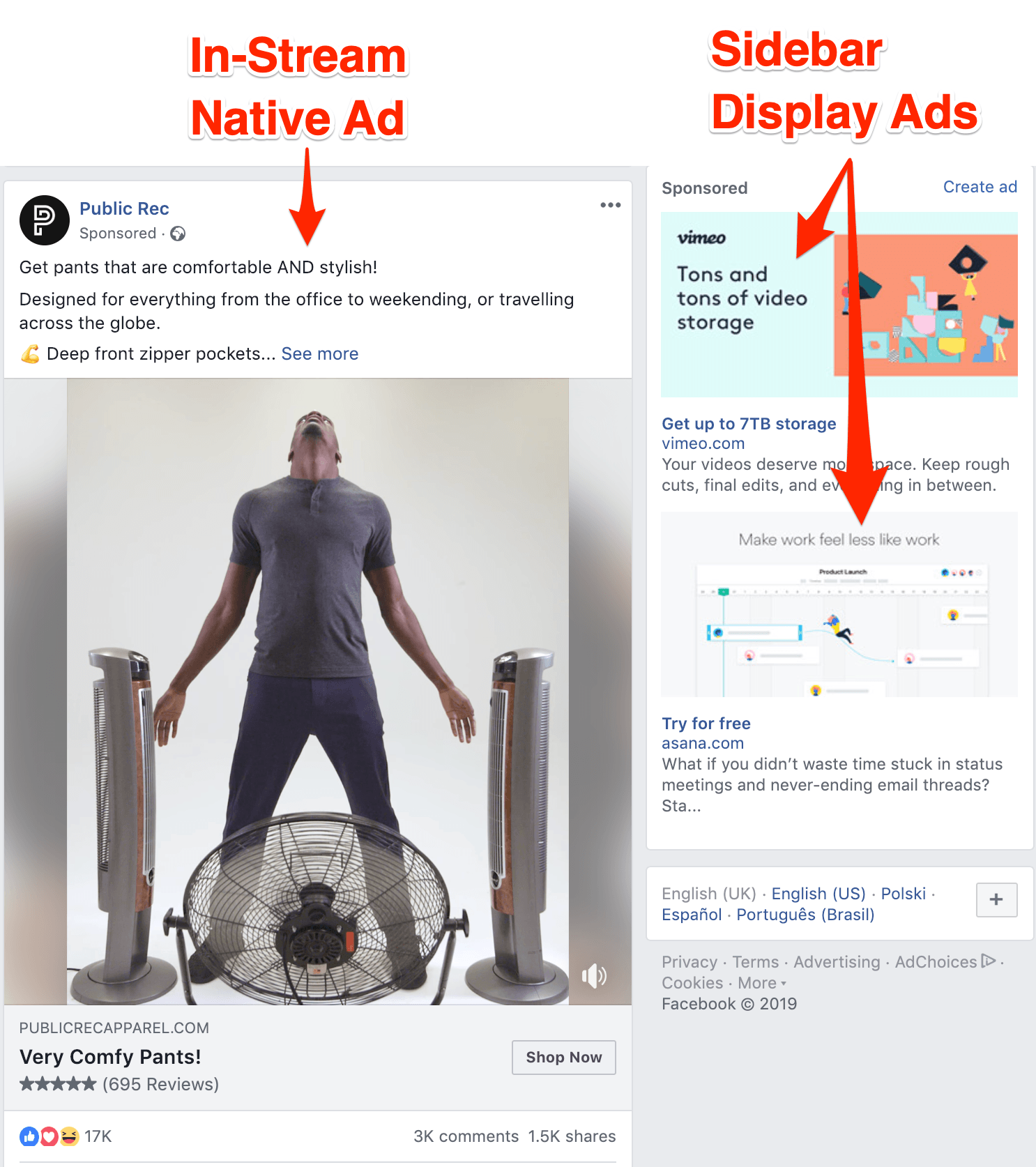
Display ads were the first form of online advertising to take root, but native ads now lead the way (more on this later).
So when creating native ads, marketers should follow best practices such as ensuring:
- The advertisement matches the design and layout of the webpage.
- The ad is delivered in the same format as the content around it (e.g., videos among videos, articles among articles, etc.)
- The ad is displayed within a user’s social media stream or alongside editorial content.
In summary, to be a truly native ad, it must look and feel like it belongs wherever it’s being displayed.
4. Native Ads Must Be Disclosed as Advertisements
When online native advertising first started it was the wild west. You could never tell what was a paid advertisement and what was a genuine endorsement or recommendation.
Influencers were just “promoting products they loved!” …while raking in the big bucks without any of their fans knowing.
Then, the U.S. Federal Trade Commision began their crackdown.
According to the FTC, consumers have the right to know if they’re being advertised to – sounds fair, right?
And there’s a high price for trying to trick consumers.
For example, Warner Bros. settled FTC charges in 2016 for deceiving their customers during a marketing campaign for the video game Middle Earth: Shadow of Mordor.
The reason? The company failed to adequately disclose that they paid influencers thousands of dollars to share positive reviews of the game on social media.
So here’s the deal: Yes, native ads work best when they blend in, but you must disclose that your ads are… well, ads!
Thankfully, most advertising platforms like Facebook automatically include the word “Sponsored.”
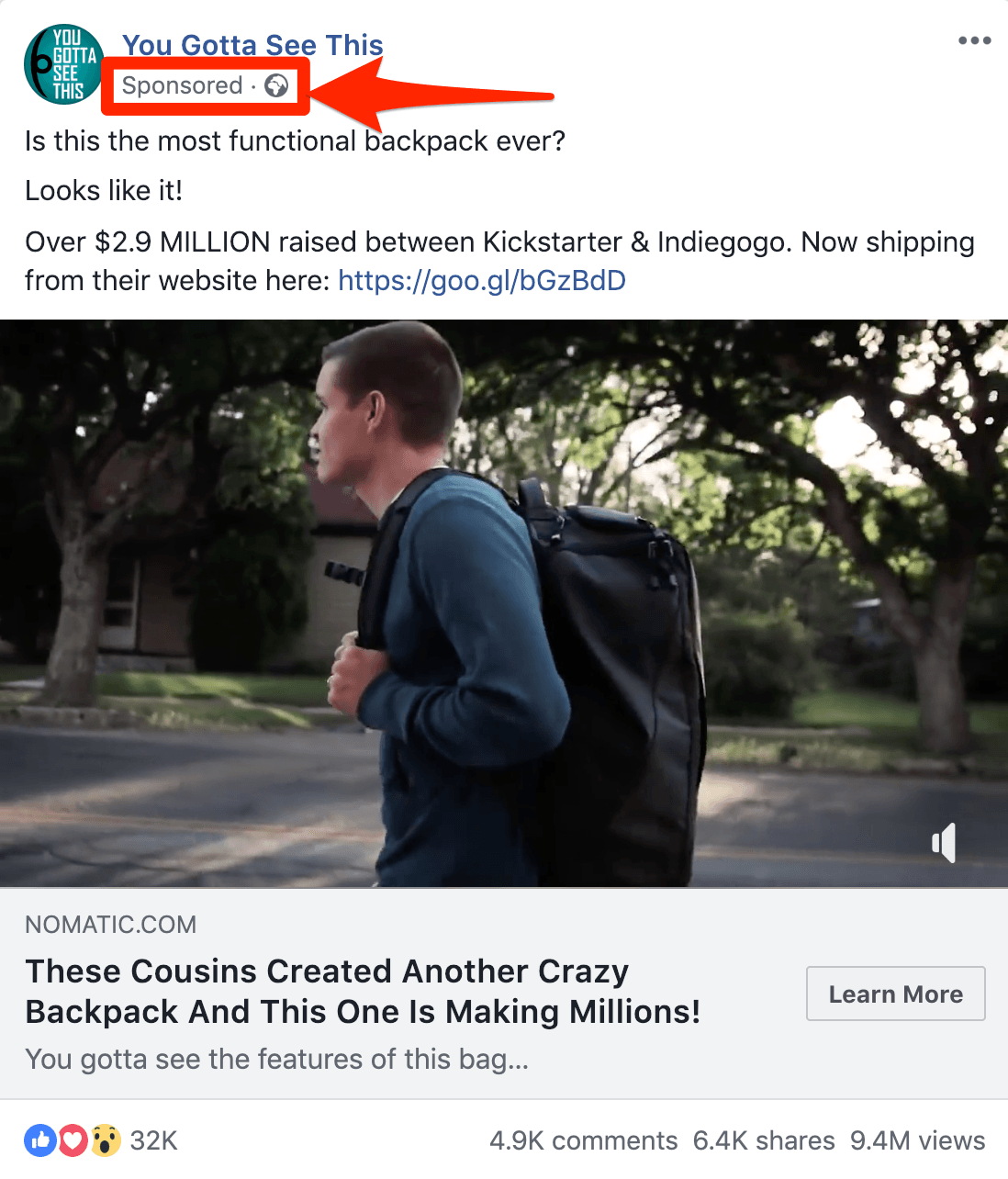
However, businesses should be careful when working with influencers to promote their products.
How to Disclose Native Ads on Social Media
If you partner with influencers, you need to make sure they include an FTC-compliant hashtag in their social media post to let viewers know they’re seeing a native advertisement.
How? Pay close attention.
According to the FTC and Adweek, the only FTC-compliant hashtags are “#sponsored” or “#ad.” This is because “both hashtags make it super clear that a person is working with a brand without leaving any wiggle room for interpretation.”
To clarify, this means that any other hashtags aren’t approved by the FTC, including the following:
- #spon
- #paid
- #paidpost
- #partnership
- #brandsponsored
- #brandedpost
- #promotedby[brand]
- #advertisement
- #sponsoredcontent
- #sponsoredpost
- #partnership
- #brandpartnership
- #suggestedpost
What’s more, according to the FTC, you can’t write “#ad” or “#sponsored” in the middle of your 23 other hashtags.
The disclosure must be easily noticed and understood by viewers.
Remember, social media platforms like Instagram only show the first few lines of your description. For this reason, it’s best to simply start your social media caption with “#ad” or “#sponsored” to ensure your disclosure is clear.
Why do Marketers Prefer Native Advertising?
In short: Native advertising is more effective than traditional display advertising.
In what way?
Well, ad agency Sharethrough and IPG Media surveyed 4,770 consumers and used the latest eye-tracking technology to assess the attention of 200 consumers to better understand the differences between native ads and standard banner ads.
Here’s what they found:
- Native ads are more compelling, registering an 18 percent lift in purchase intent compared to banner ads.
- Native ads are more noticeable, with 25 percent more consumers seeing in-stream native ad placements more than standard banner ads.
- Consumers look at native ads 53 percent more frequently than display ads.
- Native ads drive a 9 percent lift for brand affinity compared to banner ads.
- Native ads are more shareable (32 percent) than display ads (19 percent).
But that’s not all.
Remember, people are extremely good at avoiding or ignoring advertisements.
Plus, after being bombarded with advertisements their entire lives, consumers can spot self-serving advertisements a mile away and view them with skepticism.
Native advertising addresses both of these issues.
By blending in with the user experience, native ads present themselves as editorial content of value to consumers.
This means that native ads are less likely to be blocked by ad blockers, while also making them more appealing to viewers.
What’s more, native ads which are presented by influencers or publications are reinforced by social proof.
In other words, when consumers trust an influencer or a publication, they’ll be more likely to trust content or promotions promoted by them.
Native ads also have other key benefits.
According to a survey conducted by the Content Marketing Institute, marketers primarily prefer native over traditional advertising because of the ability to target/retarget customers and buyers in the sales funnel.
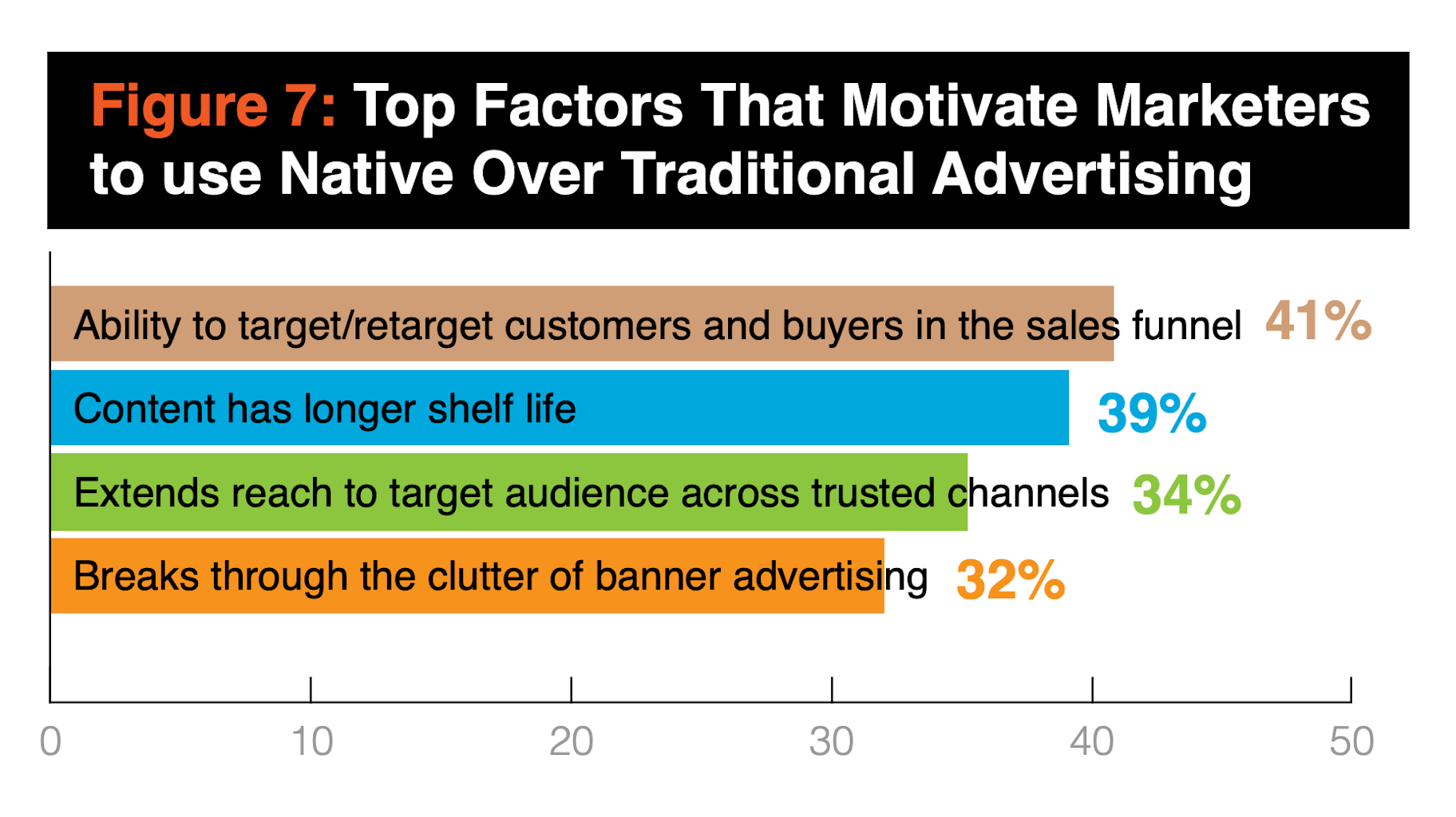
Other benefits include a longer shelf life (39 percent), the ability to extend reach to their target audiences across trusted channels (34 percent), and the ability to break through the clutter of banner advertising (32 percent).
Bottom line, native advertising is more relevant, trustworthy, and likely to be seen than display ads.
Why Is Native Advertising so Controversial?
Because of the camouflaged nature of native advertising, many people believe it to be unethical.
This is understandable when you consider how native advertising began. As I mentioned above, before standards were introduced, businesses often didn’t let consumers know when they were being advertised to.
So people took endorsements and recommendations at face value and trusted them, only to find out later that they’d been deliberately influenced.
And no one likes to be tricked into buying something.
Still, native advertising looks set to keep growing, so what should businesses do?
Well, Eric Goeres, the director of innovation at Time magazine said it best: “Don’t trick them. Don’t p*** them off.”
So publishers and brands must ensure that consumers aren’t confused about the commercial intent behind the ads.
Because done right, native advertising is a win-win-win situation:
- Publishers get revenue
- Brands get exposure
- Consumers get highly relevant and genuinely valuable content
Summary
Businesses are gravitating towards native advertising because of its ability to catch consumers’ attention and entice engagement.
Remember, true native ads are:
- Paid promotions by brands that are displayed on channels they don’t own
- Delivered in-stream and match the existing user experience of the channel on which they’re being displayed
- Usually content-based in order to match the social or editorial content that users are already expecting and consuming
- Disclosed as paid promotions with commercial intent, mostly by using the tags “Sponsored” or “Ad”
Finally, when harnessing the power of native advertising, work to create content that is relevant, engaging, and non-disruptive.
Do you think native advertising is unethical and intrusive, or simply a fantastic business opportunity? Let us know your thoughts in the comments below!






